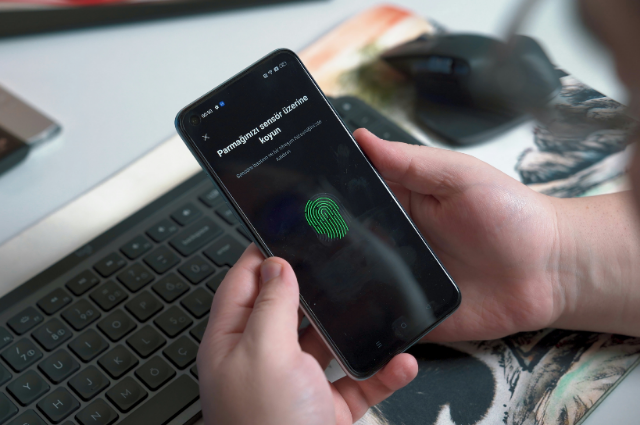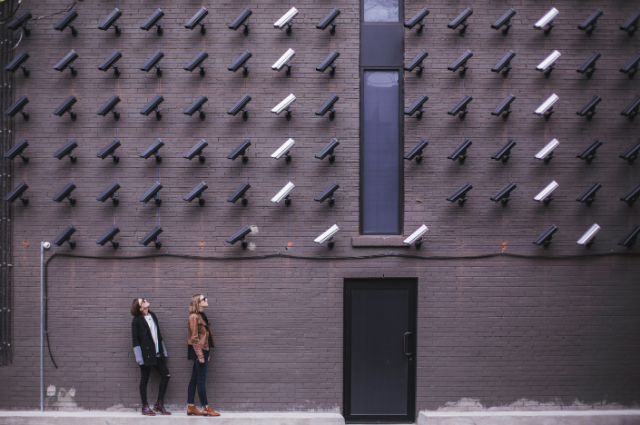Biometric authentication, once the domain of science fiction, has become a ubiquitous feature in our daily lives. This rapid adoption has brought both remarkable conveniences and notable critiques as society navigates the implications of this technology.
"Privacy is not an option, and it shouldn't be the price we accept for just getting on the Internet."
— Gary Kovacs, former CEO of Mozilla Corporation

Overview of Biometric Authentication Technologies:
The landscape of biometric authentication is diverse, encompassing several technologies that identify individuals based on unique biological traits.
- Fingerprint recognition, perhaps the most common form, has been integrated into everything from smartphones to timekeeping systems.
- Facial recognition, leveraging sophisticated algorithms to map and match facial features, has found a place in security and access control. Iris scans, offering high accuracy due to the complexity of the iris pattern, are employed in high-security environments.
- Voice recognition, using vocal characteristics for authentication, is increasingly popular in customer service and personal assistant devices. These technologies are celebrated for their precision and the difficulty in duplicating such unique identifiers.
Adoption Rates in Various Sectors:
Biometric authentication is being embraced across multiple sectors, each finding unique applications and benefits.
1. In finance, banks and fintech companies use biometrics to enhance security and streamline user experiences. Customers can now access their accounts and authorize transactions with a fingerprint or facial scan, reducing reliance on passwords and PINs.
2. The healthcare industry has also seen a surge in biometric use, improving patient identification and ensuring that medical records are accurately matched. This reduces errors and enhances the security of sensitive health data.
3. Law enforcement agencies leverage facial recognition for surveillance and identifying suspects, although this use has sparked debates about privacy and civil liberties. Consumer electronics, from smartphones to laptops, incorporate biometric authentication as a standard feature, prioritizing user convenience and security.
4. Personal devices, including home security systems and smart assistants, use voice and facial recognition to offer personalized and secure interactions. This widespread adoption underscores the trust placed in biometric systems to protect valuable information and assets.
Benefits and Conveniences Driving the Widespread Use of Biometrics
The appeal of biometric authentication lies in its blend of security and convenience. Unlike passwords, which can be forgotten, lost, or stolen, biometric traits are inherent to the individual. This makes them a reliable form of authentication, reducing the risk of unauthorized access.
Biometric systems also streamline processes, saving time and enhancing user experience. For instance, unlocking a device with a fingerprint or face scan is faster and simpler than entering a complex password. In financial transactions, biometric verification can expedite processes, allowing for seamless, secure payments.
However, the enthusiasm for biometrics is not without criticism. The infallibility of biometric systems is often overstated; while harder to replicate than passwords, biometrics are not immune to spoofing or hacking. Moreover, the permanence of biometric data poses significant risks. Unlike a password, biometric data cannot be changed if compromised, potentially exposing individuals to lifelong vulnerabilities.
The integration of biometrics into law enforcement and surveillance also raises ethical concerns. The potential for misuse and the impact on privacy rights require careful consideration and robust regulatory frameworks to ensure that the technology serves society's best interests without infringing on individual freedoms.
BIOMETRIC DATA THEFT GROWTH

How Biometric Data is Stored and Processed?
Biometric data, unlike traditional passwords, is inherently personal and unique to each individual. When a biometric system captures this data, it transforms it into a digital format through sophisticated algorithms.
For instance, a fingerprint scanner converts the ridges and valleys of a fingerprint into a digital template, while facial recognition software maps key facial features and creates a unique digital signature.
Once captured, this data is stored in databases, either locally on a device or in cloud-based systems. During authentication, the biometric input is compared against the stored template to verify identity.
While this method is efficient, it also means that the security of biometric data is heavily dependent on the robustness of the storage and processing systems.
- Biometric Data Security Versus Traditional Authentication Methods:
At first glance, biometric authentication seems to offer superior security compared to traditional methods. Passwords and PINs can be easily forgotten, guessed, or stolen through phishing attacks. In contrast, biometric data is unique and cannot be easily replicated or shared.
However, this supposed security superiority is not without flaws. Traditional passwords can be changed if compromised, but biometric data is immutable.
Once a fingerprint or facial template is stolen, it cannot be altered, posing a lifelong security risk for the individual. Additionally, the perception of biometrics being infallible can lead to complacency, potentially resulting in weaker overall security practices.
- Vulnerabilities and Potential Attack Vectors Specific to Biometric Data:
Biometric systems, while advanced, are not impervious to attacks. One significant vulnerability lies in the initial capture of biometric data. If a device used to collect biometric information is compromised, the data can be intercepted at the source.
This is particularly concerning with the rise of sophisticated skimming devices and malware designed to target biometric sensors.
Another critical point of vulnerability is the storage of biometric data. Whether stored locally or in the cloud, databases can be targeted by cybercriminals.
Breaches in these databases can lead to massive leaks of biometric information, as seen in several high-profile incidents in recent years. Unlike passwords, which can be reset, stolen biometric data remains a permanent risk.
Attackers can also exploit weaknesses in the biometric matching algorithms themselves. Techniques such as spoofing, where artificial replicas of biometric traits are used to deceive sensors, have become increasingly sophisticated.
For instance, researchers have demonstrated the ability to create fake fingerprints or use high-resolution photographs to fool facial recognition systems.
NOTABLE CASES OF THE BREACHES
As the adoption of biometric authentication systems grows, so too does the sophistication and audacity of cybercriminals targeting these sensitive repositories of personal information.

- The OPM Data Breach: A Wake-Up Call
The Office of Personnel Management (OPM) data breach in 2015 stands as a stark reminder of the vulnerabilities inherent in biometric data storage and security. This catastrophic breach exposed the fingerprints of approximately 5.6 million federal employees, alongside other personal information such as Social Security numbers and background investigation records.
The sheer scale of the OPM breach sent shockwaves through the cybersecurity community, highlighting the critical need for more robust protection measures.
The implications of this breach are profound and long-lasting. Unlike passwords, biometric data is immutable; once compromised, it cannot be changed.
This permanence poses a significant threat, as stolen biometric data can be reused indefinitely for identity theft and unauthorized access. Despite the severity of the breach, the response from OPM and associated government entities was widely criticized for its sluggishness and lack of transparency.
The breach underscored a crucial lesson: organizations handling biometric data must adopt proactive, rather than reactive, security measures.
- The Biostar 2 Data Leak: A Security Oversight
In 2019, the Biostar 2 data leak revealed a massive security oversight in one of the world's largest biometric access control systems. Researchers discovered that the platform, which stores fingerprints, facial recognition data, and other sensitive information, was accessible online without proper encryption.
This exposed the biometric data of over one million individuals, including employees of major corporations and government agencies.
The Biostar 2 incident exemplifies the risks associated with inadequate security practices. The lack of encryption and proper access controls made the system an easy target for cybercriminals.
The response from the responsible parties was, yet again, lacklustre. The initial disclosure was met with denial and downplaying, delaying corrective actions and leaving affected individuals in the dark about the potential misuse of their data.
- Aadhaar: The Indian Biometric Database Breach
India's Aadhaar system, one of the largest biometric databases globally, has also faced significant breaches. In 2018, reports surfaced that the personal data of over one billion Indian citizens, including biometric information, was available for purchase online for a meagre sum.
This breach exposed the systemic flaws in the database's security protocols and the perils of centralized biometric data storage.
The misuse of Aadhaar data has far-reaching consequences. Instances of identity theft, fraud, and unauthorized access to government services have been reported.
The breach sparked a nationwide debate on privacy and data security, pushing the Indian government to reassess its approach to biometric data protection.
However, critics argue that the measures taken thus far are insufficient, calling for more stringent regulations and oversight.
- The Misuse of Stolen Biometric Data
The aftermath of biometric data breaches is marked by the pernicious misuse of stolen information. Cybercriminals leverage biometric data to craft sophisticated identity theft schemes, bypass security systems, and facilitate unauthorized financial transactions.
The immutability of biometric data exacerbates the issue, as victims have no means of revoking or altering their compromised identifiers.
Moreover, the integration of biometric data with other personal information enhances the precision and effectiveness of social engineering attacks.
Criminals can impersonate individuals with alarming accuracy, undermining trust in biometric authentication systems. This misuse underscores the urgent need for comprehensive security frameworks that prioritize the protection of biometric data from collection to storage and transmission.
METHODS USED BY CRIMINAL TO STEAL BIOMETRIC DATA
The rise of biometric authentication has ushered in a new era of security, promising to enhance protection by leveraging unique physiological traits. However, this technological leap has not gone unnoticed by cybercriminals, who are continuously devising sophisticated methods to steal biometric data.

Skimming and Phishing: Old Tricks with New Targets
Skimming and phishing, long-standing techniques in the cybercriminal’s arsenal, have adapted to the biometric age. Skimming involves the use of hidden devices to capture biometric data at the point of entry.
For instance, modified fingerprint scanners or cameras placed near facial recognition systems can covertly collect data. While such methods require physical proximity, they are alarmingly effective in high-traffic areas like airports and office buildings.
Phishing, traditionally associated with stealing passwords and financial information, has also evolved. Cybercriminals craft elaborate schemes to trick individuals into providing their biometric data, often by masquerading as legitimate organizations.
A fraudulent email might prompt a user to “verify” their identity by uploading a fingerprint scan or facial photo, and unwittingly handing over sensitive information to the attackers.
Hacking and Software Exploitation: Digital Intrusion
Hacking remains a cornerstone of biometric data theft, with cybercriminals targeting databases where biometric information is stored. These attacks can range from direct assaults on weakly secured servers to more insidious methods, such as inserting malware that intercepts biometric data during transmission.
The sophistication of hacking techniques continues to grow, with attackers leveraging zero-day vulnerabilities and advanced persistent threats (APTs) to breach even the most fortified systems.
Software exploitation is another critical vector. Vulnerabilities within biometric systems themselves can be exploited to gain unauthorized access. For example, flaws in the algorithm that processes facial recognition data can be manipulated to allow entry using altered images.
Such vulnerabilities highlight the importance of robust software design and regular security updates.
Emerging Threats: Synthetic Biometrics and Spoofing
As technology advances, so do the threats. Synthetic biometrics, a relatively new menace, involves the creation of fake biometric data that mimics legitimate patterns.
Using machine learning and AI, cybercriminals can generate synthetic fingerprints, facial images, or even voiceprints that are convincing enough to fool authentication systems. This development poses a severe challenge, as traditional detection methods may not differentiate between real and synthetic biometrics.
Biometric spoofing is another growing concern. Attackers use various materials to create physical replicas of biometric traits, such as silicone fingerprints or high-resolution photos for facial recognition.
These spoofs can deceive poorly secured systems, emphasizing the need for multi-factor authentication and liveness detection mechanisms that verify the presence of a living person.
Tools and Resources: An Expanding Arsenal
The tools and resources available to cybercriminals for conducting biometric theft are both diverse and accessible. Dark web marketplaces offer ready-made skimming devices, sophisticated phishing kits, and exploit frameworks for hacking biometric systems.
Tutorials and forums provide detailed instructions, enabling even less technically savvy criminals to engage in biometric theft.
Additionally, the proliferation of AI and machine learning tools has democratized the creation of synthetic biometrics and enhanced spoofing techniques.
These tools, once confined to research labs, are now widely available, significantly lowering the barrier to entry for biometric fraud.
IMPLICATIONS FOR PERSONAL SECURITY AND PRIVACY
The rapid adoption of biometric authentication technologies—ranging from fingerprints and facial recognition to iris and voice scans—has undoubtedly ushered in a new era of convenience and security. However, the rising threat of biometric data theft presents a formidable challenge, raising critical concerns about personal security and privacy that demand urgent attention.

- Immutable Nature of Biometric Data: A Double-Edged Sword
Unlike passwords or PINs, biometric data is inherently immutable. Once compromised, it cannot be changed or reissued. This permanence creates a long-term vulnerability for individuals whose biometric data has been stolen.
For example, if a cybercriminal gains access to a person's fingerprint data, that individual is at risk of identity theft for life, as they cannot simply "reset" their fingerprints. This immutable nature of biometrics, while providing robust security against impostors, simultaneously serves as a perpetual risk once breached.
- Privacy Concerns: The Looming Shadow of Surveillance
The misuse of biometric data extends beyond mere financial theft, potentially leading to severe breaches of personal privacy. The aggregation of biometric data by corporations and governments poses significant risks if this information falls into the wrong hands.
There is a genuine fear of increased surveillance, where individuals' movements and actions are monitored without their consent. This erosion of privacy could lead to a society where anonymity becomes a relic of the past, and personal freedom is curtailed.
Moreover, the potential for biometric data to be used for discriminatory purposes cannot be overlooked. For instance, biased algorithms in facial recognition technology can lead to disproportionate targeting of certain racial or ethnic groups, exacerbating existing societal inequalities.
The ethical implications of such surveillance are profound, demanding rigorous scrutiny and robust regulatory frameworks.
- Enhancing Biometric Security: Towards a Safer Future
Addressing the security and privacy concerns associated with biometric data theft requires a multi-faceted approach. Implementing multi-factor authentication (MFA) is a critical first step.
By combining biometrics with other authentication factors such as passwords or smart cards, the security of biometric systems can be significantly enhanced. This layered defence mechanism ensures that even if biometric data is compromised, additional barriers protect against unauthorized access.
Encryption of biometric data is another vital measure. Ensuring that biometric information is stored and transmitted in an encrypted format can mitigate the risk of interception and misuse. Advanced encryption protocols must be employed to safeguard this sensitive data, making it difficult for cybercriminals to exploit.
Regulatory measures play a crucial role in protecting biometric data. Governments and regulatory bodies must establish stringent guidelines for the collection, storage, and use of biometric information.
These regulations should mandate regular security audits, breach notifications, and penalties for non-compliance, thereby incentivizing organizations to prioritize the security of biometric data.
CONCLUSION:
The rise of biometric authentication technologies brings significant advancements in security and convenience, but it also introduces substantial risks, particularly in the event of biometric data theft. The immutable nature of biometric data, coupled with the potential for extensive privacy invasions and increased surveillance, underscores the urgent need for comprehensive security measures. To protect individuals' personal security and privacy, a multi-layered approach involving multi-factor authentication, robust encryption, and stringent regulatory frameworks is essential. Only through such concerted efforts can we safeguard the future of biometric technology and ensure its benefits are not overshadowed by its vulnerabilities.
Note to Readers:
Dear Readers,
As we continue to embrace technological innovations, it is crucial to remain vigilant about the potential risks and challenges they present. Biometric authentication offers remarkable benefits, but the security and privacy implications of biometric data theft cannot be ignored. Stay informed, advocate for robust security measures, and support policies that protect your personal information. Together, we can navigate the complexities of this technological landscape and create a safer digital future for all.
